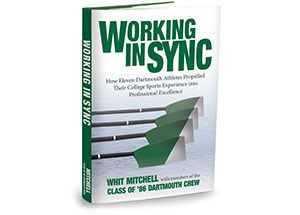Overcoming Adversity Through Self-Reflection
What are the barriers or buoys in your life right now? How you deal with adversity will be instrumental in how you live your life. All of us have had disappointments, failures, misgivings, and tragedies during our time on this earth; others deal with smaller things that are big obstacles in their work or personal lives.
Whether you’re dealing with great pain or trying to navigate a smaller buoy, know that when you reach out to others, you are not a burden. Don’t deny others the joy of helping you. It takes courage to admit and seek counsel, but you know you will impact others by taking the first step.
Write you answers to these questions in Step 1, and then find a partner, colleague, peer, or friend, and follow the directions in Step 2.
Step 1: Identify Barriers
- What are the barriers/buoys in your life today?
- What have you tried to do in the past to move past these barriers?
- How did it work?
- What do you need to do differently?
- What will you do differently?
Step 2: Accountability/Responsibility
- Now that you have a partner, peer, or colleague invested in your success, agree on a timetable for regular check-ins. Create self-accountability measures so your peer coach knows what your expectations are for change. This will give him/her concrete metrics to help you achieve your desired goal(s) for overcoming those barriers.
- It’s best to set up short weekly meetings so too much time doesn’t pass once you decide on your commitments. Have a clear agenda with outcomes for your meetings.
You might find that your partner also wants to discuss and issue/barrier that is impeding their progress in one area of their life. Be available and supportive, if that’s the case. It’s amazing that when others see success, they, too, may want to improve in some areas of their own lives.
If you are having trouble identifying barriers in your life but know something just isn’t right, you might want to try the following:
- Draw a big circle on a piece of paper and divide it into eight sections, like a pie. Write in these eight different aspects of your life into one of these slices: (1) work, (2) health, (3) spiritual, (4) financial, (5) love life, (6) environment, (7) friends and family, and (8) professional development.
- Rate the degree of satisfaction in your life in each of the slices. On a scale of 1 to 10, how satisfied are you with each faction of your life?
- Look over your ratings and decide which area needs some attention. For example, you may discover that if you improve your health, other areas will also improve.
- For the areas you want to change, decide what you want to “Start Doing” and what you want to “Stop Doing.” Create a timetable for your committed actions.
- Go back every three months and rate each area again to see what has changed. Did you find some new barriers that have prevented you from living your ideal life? If so, go back to Step 1 to see what to do.
There is more and more research coming out that shows that people are more motivated to change based on their pain than on the gain of rewards associated with change. Ask yourself, what are the consequences short and long term if you don’t make any changes? What are the rewards for making change? Is the pain great enough to create change and is the benefit great enough to sustain change?
Reflecting back at your past, how have you dealt with barriers and pain? You can be reactive or proactive. Will you ignore the pain and hope it goes away or will you create a strategy that eliminates those barriers that are getting in the way of living the life you deserve?
Excerpted from Working in Sync: How Eleven Dartmouth Athletes Propelled Their College Sports Experience into Professional Excellence


